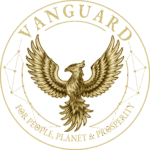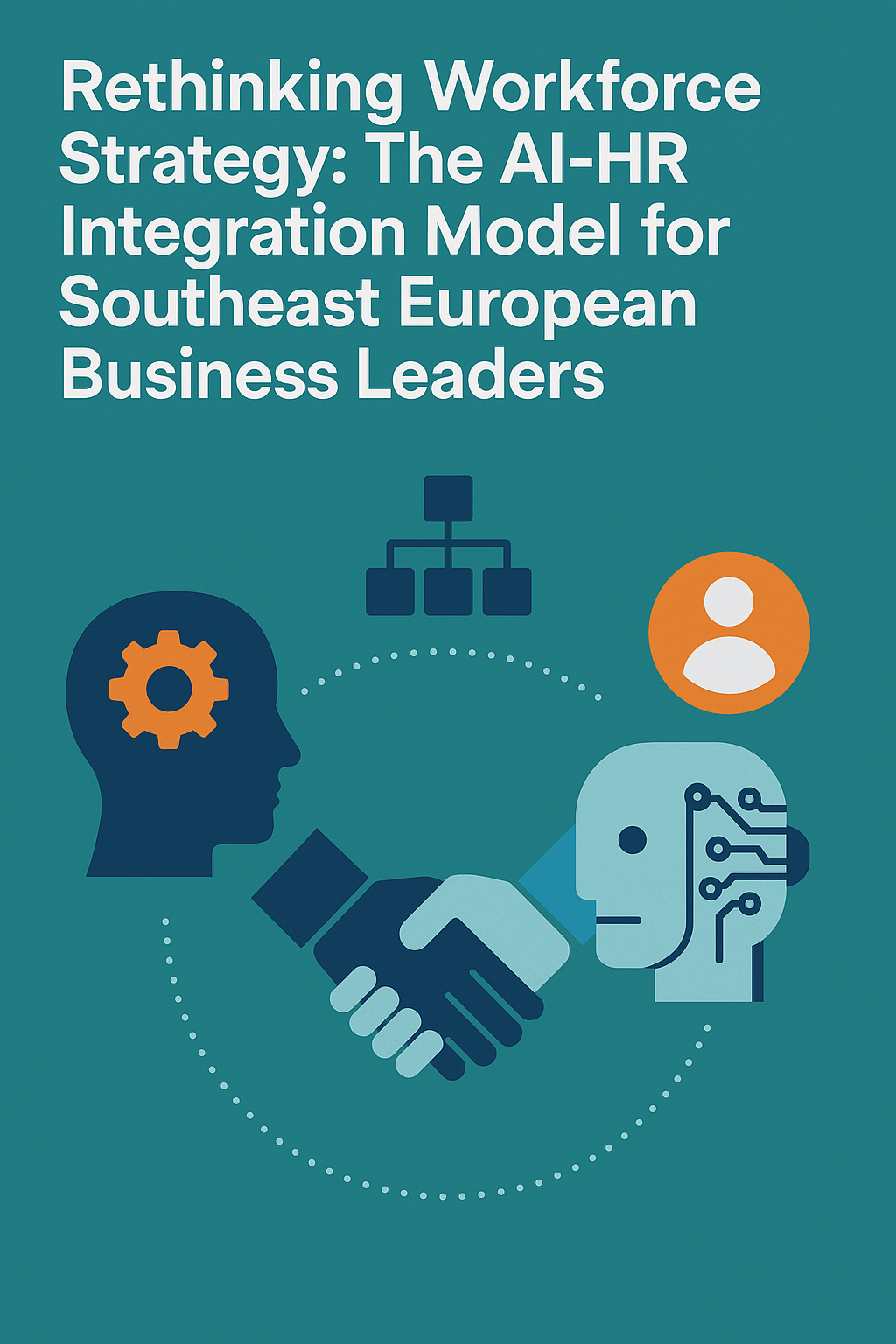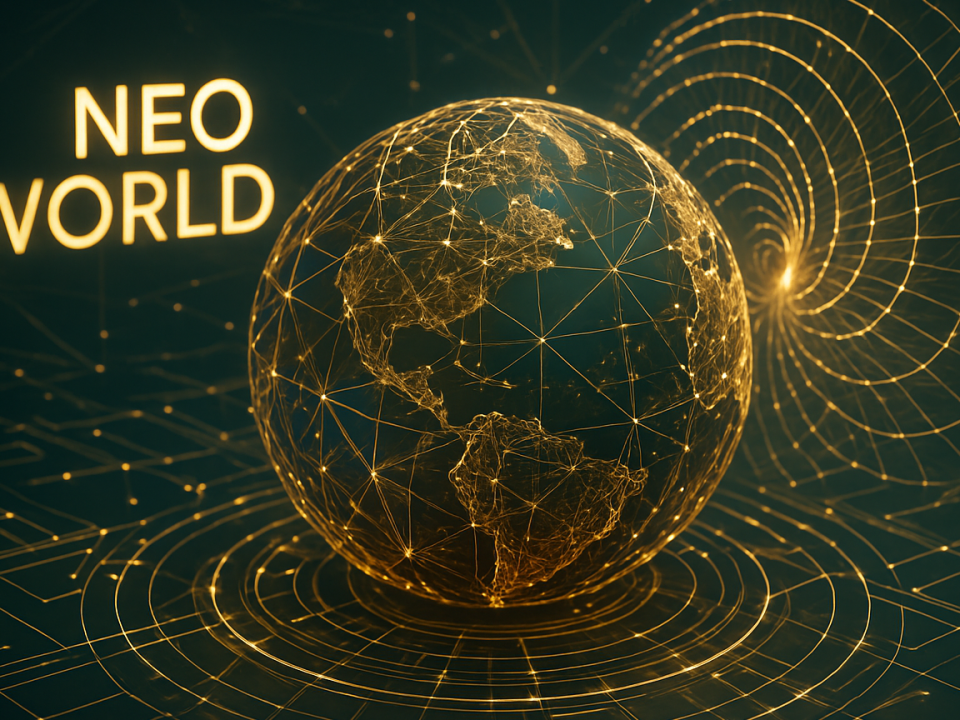
“Daring is the price of progress. All splendid conquests are the prize of boldness, more or less”
08/05/2025
Why We Acquired the International Leadership Journal:
22/05/2025
The Workforce Paradox in Southeast Europe
Across Southeast Europe (SEE), businesses face a puzzling situation. Despite workforce shortages plaguing many sectors, there is growing evidence that traditional workforce planning approaches need complete reimagining. The rise of artificial intelligence and advanced technologies is creating both challenges and opportunities that forward-thinking business leaders cannot afford to ignore.
The biotech giant Moderna recently made headlines by merging its technology and human resources departments into a single function. This pioneering move signals how AI is fundamentally changing workforce dynamics. By appointing Tracey Franklin to the newly created role of Chief People and Digital Technology Officer, Moderna acknowledged that human talent and technological capabilities must be managed as interconnected resources, rather than separate domains.
While many organizations scramble to fill positions using conventional hiring methods, progressive companies are taking a different approach—strategically integrating technology and human resources to transform how work gets done. Moderna’s Bold Merger: A Case Study in Workforce Transformation
Franklin’s approach is methodical and strategic: she is redesigning teams across the company based on a clear assessment of what humans best perform work versus what can be efficiently automated with technology. Her team leverages its partnership with AI powerhouse OpenAI to create customized solutions that transform how work gets done.
The results have been remarkable. Moderna has developed over 3,000 tailored versions of ChatGPT (known as GPTs) designed for specific tasks:
- Dose selection for clinical trials
- Drafting responses to regulatory questions
- Creating complex HR workflows that handle employee inquiries
As Franklin noted, “It’s like your virtual HR, AI agent. It’s what would normally be a junior-level HR analyst type, we’ve now converted it into a GPT.” This transformation enables human talent to focus on higher-value activities that require creativity, emotional intelligence, and strategic thinking.
The COTRUGLI Framework: Bridging Technology and Human Potential
At COTRUGLI Business School’s CO Lab initiative on the Future of Work, we’ve developed a practical framework that helps SEE companies reassess departmental needs and design an optimal mix of human workers and technology systems. Our approach goes beyond simple automation to create truly integrated human-AI workforces.
The framework addresses several critical questions:
- Which tasks require uniquely human capabilities? (Creativity, complex problem-solving, emotional intelligence, ethical judgment)
- Which processes can be enhanced or automated through AI? (Data analysis, routine communications, information processing, forecasting)
- How can organizational structures evolve to support this new division of labor? (New roles, reporting structures, decision rights)
- What skills must be developed in your workforce to thrive alongside AI systems? (Technical literacy, AI collaboration competencies, strategic thinking)
Unlike many consulting approaches that treat technology adoption and workforce planning as separate initiatives, our integrated methodology ensures alignment between your people strategy and digital transformation efforts.
Practical Implementation: Beyond Theory
The path to successfully integrating AI and human resources requires both vision and practical execution. Southeast European business leaders must navigate several realities:
The Growth Imperative
For growing businesses in the SEE region, now is precisely the right time to strategize about the future workforce. Moderna’s experience demonstrates this principle—they nearly doubled their workforce from 830 employees in March 2020 to approximately 1,500 by March 2021, and now employ over 5,000 people globally. This growth created the opportunity to reimagine how work gets done.
The Transformation Process
Successful transformation requires a phased approach:
- Assessment: Conduct a detailed analysis of current workflows to identify opportunities for AI enhancement or automation.
- Pilot Implementation: Test AI-powered systems in controlled environments before wider deployment.
- Organizational Redesign: Create new roles, eliminate redundant positions, and reimagine existing jobs based on the capabilities AI brings.
- Skills Development: Invest in training programs that prepare your workforce to work alongside AI systems.
Resource Optimization
Even as Moderna implemented thousands of AI applications, it still made targeted reductions in certain areas, cutting 10% of digital technology jobs (affecting approximately 50 people) while continuing to increase headcount overall as it launched new products. This highlights how AI integration isn’t simply about staff reduction, but rather about strategic resource allocation.
The Competitive Advantage for SEE Companies
Southeast European businesses that effectively integrate AI and HR functions gain several advantages:
- Resilience against talent shortages: By automating routine tasks, companies can allocate their scarce human talent to high-value activities.
- Cost efficiency: Strategic automation reduces operational costs while maintaining or improving service quality.
- Enhanced decision-making: AI-powered analytics provide deeper insights for strategic workforce planning.
- Increased agility: Integrated human-AI teams can adapt more quickly to market changes and opportunities.
As Wade Davis, Moderna’s head of digital for business, observed: “It’s hard to convey—within the hype—how much AI is changing things and how much Moderna is using it across the board.” This sentiment reflects the profound impact that thoughtful AI integration can have on organizational performance.
Your Next Steps with COTRUGLI
The integration of technology and human resources represents both a challenge and an opportunity for Southeast European business leaders. Instead of approaching this transformation reactively, we would like to invite you to engage with COTRUGLI’s experts in a structured discovery process.
Our 30-minute discovery call offers a no-obligation opportunity to:
- Assess your current workforce challenges and AI readiness
- Identify specific opportunities for human-AI integration in your organization
- Outline a preliminary roadmap for transformation
- Explore how COTRUGLI’s frameworks can be customized to your specific industry needs
In a region facing persistent workforce challenges, the companies that thrive will be those that strategically combine human potential with technological capabilities. The future belongs to organizations that view HR and technology not as separate functions but as integrated components of a unified workforce strategy.
Please reach out to COTRUGLI today to schedule your discovery call and begin your journey toward workforce transformation.




